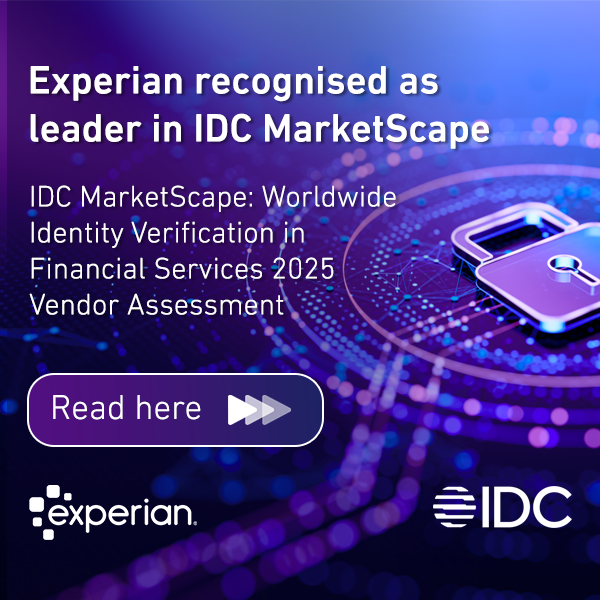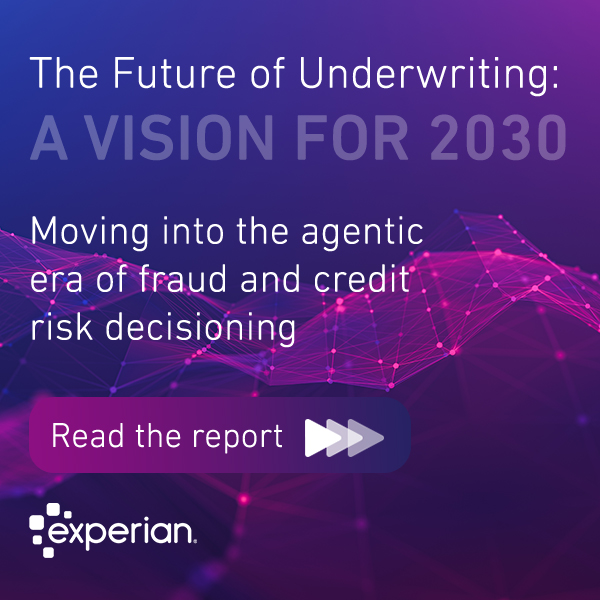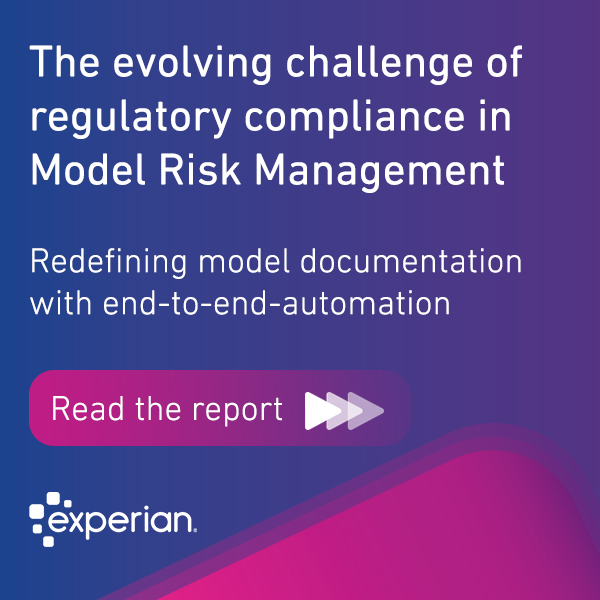Search Results for: DATA AI

Why digital acceleration has created more opportunities for deepfake fraud tactics like voice cloning and what businesses can do about it Digital acceleration has placed information and services in the hands of the masses, connecting individuals on a global level like never-before, and in turn making them increasingly dependent on devices in their daily lives. The argument for technology as an equalizer in society is a strong one. Most people have a voice and a platform, producing millions of virtual interactions and recordings every day. But in this digital world of relative anonymity, it is difficult to know who is really on the other side of the connection. This uncertainty gives fraudsters an opening to threaten both businesses and consumers directly, especially in the realm of deepfakes. What is a deepfake? Deepfakes are artificially created images, video and audio designed to emulate real human characteristics. Deepfakes use a form of artificial intelligence (AI) called deep learning. A deep learning algorithm can teach itself how to solve problems using large sets of data, swapping out voices and faces where they appear in audio and video. This technology can deliver extraordinary outcomes across accessibility, criminal forensics, and entertainment, but it also allows a way in for cybercriminals that hasn’t existed until now. Deepfake fraud tactics A principal tactic among deepfake fraud is voice cloning – the practice of taking sample snippets of recorded speech from a person and then leveraging AI to understand speech patterns from those samples. Based on those learnings, the modeler can then use AI to apply the cloned voice to new contexts, generating speech that was never spoken by the actual voice owner. For businesses, deepfake tactics such as voice cloning means access to points of vulnerability in authentication processes that can put organizations at risk. Fraudsters may successfully bypass biometric systems to access areas that would otherwise be restricted. For government leaders, it can mean the proliferation of misinformation – a growing area of concern with huge repercussions. For consumers, the risk of falling victim to scams involving access to personal information or funds is particularly high when it comes to voice cloning. How to prevent deepfake fraud 1. Vigilance: Stay on top of sensitive personal information that could be targeted. Fraudsters are always at work, relentlessly seeking out opportunities to take advantage of any loophole or weak spot. Pay close attention to suspicious voice messages or calls that may sound like someone familiar yet feel slightly off. In an era of remote work, it is important to question interactions that can impact business vulnerabilities – could it be a phishing or complex social engineering scam? 2. Machine learning and advanced analytics: Deepfake fraud is an emerging threat, which leverages the development and evolution of the technology that fuels it. The flip side is that businesses can in fact use the same technology against the fraudsters, fighting fire with fire by deploying deepfake detection and analysis. 3. Layered fraud prevention strategy: Leveraging machine learning and advanced analytics to fight deepfake fraud can only be effective within a layered strategy of defense, and most importantly, at the first line of defense. Ensuring that the only people accessing the points of vulnerability are genuine means using identification checks such as verification, device ID and intelligence, behavioral analytics, and document verification simultaneously to counter how fraudsters may deploy or distribute deepfakes within the ecosystem. As with many types of fraud, staying one step ahead of the fraudsters is critical. The technology and the tactics continually evolve, which may make the countermeasures on the table right now obsolete, however the fundamentals of sound risk management, with the right layered approach, and a flexible and dynamic solution set, can mitigate these emerging threats. Stay in the know with our latest research and insights:

Fraud threats continue to rise across the globe as consumers are spending record amounts of time online due to the pandemic. At the same time, emerging threats of fraud are growing, as fraudsters are taking advantage of the globally shifting economic conditions. Fraud prevention remains a top concern for both consumers and businesses alike. Anticipating future fraud risk is critical and companies are adopting more complex technology systems to ensure consumers’ financial safety. To provide a safe and convenient experience, businesses need to take a customer-first approach when evaluating the latest technology and solutions available to them. To ensure they are providing secure online experiences, businesses are turning to verification strategies using data technology and other detection methods. In fact, according to this year’s Global Identity and Fraud Report, customer recognition security strategies have become the new norm for businesses with 82 percent of companies saying they now have one in place, a 26 percent increase since the start of the pandemic. An independent research firm headquartered in Germany, KuppingerCole Analysts, released a report, Leadership Compass: Fraud Reduction Intelligence Platforms, that provides an overview of the market segment, vendor service functionality, prevention measures and innovative solutions to fraud. The report cites Experian as an overall leader, product leader, innovation leader, market leader and technology leader in fraud reduction intelligence platforms. Experian is also credited for taking a client-oriented upgrade approach and delivering other cutting-edge features while maintaining compatibility with our older platform releases. We also scored a strong positive for interoperability, usability, deployment, innovativeness, market position, financial strength and ecosystem; and a positive in security and functionality. We pride ourselves in our digital identity protection services and consumer safety, taking proactive approaches to fraud prevention and providing businesses with the necessary tools to identify risks of fraud. The report discusses fraud prevention measures and innovative solutions to fraud. According to the report, cybercrime costs will reach $10.5 trillion by 2025. The report evaluated 15 different data security and fraud prevention platforms and ranked their products, innovation, market positioning and technology in their report. All of Experian’s fraud detection and prevention services are available through our CrossCore® partner ecosystem. By combining advanced analytics, rich data assets, identity insights and fraud prevention capabilities, businesses can connect any new or existing tools and systems in one place, whether it be Experian’s, Experian’s partners or its own. With its built-in strategy design and enhanced workflow, fraud and compliance teams have more control to quickly adjust strategies based on evolving threats and business needs, which helps to improve efficiency and reduce operational costs. Learn more about the CrossCore platform. Stay in the know with our latest research and insights:

A recent industry-leading analyst report looking at loan origination solutions found that lenders are experiencing high volumes of new loan applications, but many are struggling to process them. This alongside increased consumer demand for improved digital experience, and a shifting credit landscape means lenders are trying transform both to keep operating costs down and meet the needs of a changing market. This tracks closely to findings from our Global Decisioning Report 2021. We look at what is changing, and how the Now Tech: Loan Origination Solutions report advises lenders to move forward. Consumers went online, and have high expectations of the digital experience The pandemic shut down banking and retail locations around the world. Amidst the lockdown, consumers turned online to manage finances, connect with lenders, and buy essential goods and services. The crisis especially accelerated digital adoption for older consumers and created a new digital imperative for lenders wanting to meet customers’ evolving needs. The rise of self-service and new payment methods There was also an increase in the already growing demand for digital self-service in terms of applying for credit and seeking out repayment support. Consumers expect to be able to apply for credit when and where they need it, often using a mobile-friendly device. In return for convenience and security, consumers report that they’re more willing to provide additional personal data. Timely, meaningful credit and repayment offers, convenient interactions, and improved communication with lenders make the exchange worth it. The convenience of digital channels is also creating the opportunity for new payment methods, such as subscription models and Buy Now Pay Later (BNPL). Both are occurring across a range of products and services, from cars to clothes to beauty essentials. Our Global Decisioning Report found that 27% of consumers reported purchasing products using BNPL programs. Traditional lenders will need to consider the needs that the emerging BNPL market meets. This includes making purchases easier for consumers by providing increased payment flexibility. APIs, security, integration, and explainable AI According to the Now Tech report, lenders should look for solutions that allow access to data via APIs for credit decisioning, have strong data security and privacy practices, integrate with third-party technology products and services, and leverage explainable AI for underwriting. Allowing lenders to acquire customers digitally is key, and loan origination solutions provide a digital portal that can be accessed across devices and which supports real-time customer input, document uploads, data aggregation and analysis, and digital signatures. Want to read the full 2021 Global Decisioning Report?

Financial institutions have long been dependent on technology for business operations, resulting in a long history of tech additions, upgrades and vendors. Changes made to legacy IT systems can not only impact customers, but in many cases, the economy too. Often these systems feel safe and familiar, so it can be a difficult choice to make a change. However, over the last year the pandemic has highlighted the need for agility within the market. Responding to changing customer needs in an increasingly digital environment is number one priority. What do we mean by legacy tech? The term legacy tech has a lot of negative connotations. It refers to a set of computer systems, software and technologies that can no longer be maintained or easily updated. The system could be out of support or in extended support. Integration becomes a challenge because different technologies have accumulated over the lifespan of the business, and the associated support levers around it are all different. There is also the challenge of finding the skills to maintain these systems – in-house or outsourced from providers. Maintenance costs can be high – security and resilience test costs will add to this, while performance will drop with the increasing need for work-arounds. Upgrades can be complex, expensive or even impossible on legacy systems, generating extra costs. Financial institutions create their own legacy systems when they start integrating various data sets from different sources. It can happen when the business grows to new locations, new lines of product, extended consumer services, while using different tech from different vendors. Cloud as an enabler for business transformation From the moment code is written and deployed, it becomes legacy. Cloud integration allows for daily code releases and automated upgrades meaning that businesses are constantly adjusting and responding to client needs, regulation and strategic changes. They can instead focus on their business model and innovation, staying relevant and up to date. Budget is directed towards improvements and innovation instead of maintaining the legacy tech. It brings an interesting level of agility, with the ability to respond to the market much more quickly and effectively. How cloud can benefit the customer Cloud-based services have allowed banks to revolutionize onboarding processes and timescales. Processes like KYC (Know Your Customer) can be carried out by partners for a fast and efficient experience. Throughout the lifecycle of a customer, banks can leverage third parties for every part of the journey and ultimately improve customer experience. Beyond the onboarding process, the entire customer lifecycle, from originations to collections, can be transformed by removing friction and using AI to create interest, and ML to make decisions for quick results. Experian has partnered with Open Banking Expo TV to produce a series on Cloud-based solutions. Sign up to watch. Related content

Did you miss these June business headlines? We’ve compiled the top global news stories that you need to stay in-the-know on the latest hot topics and insights from our experts. Fintech Interview with Executive Vice President, Experian – Eric Haller FinTech Buzz talks to Eric Haller, VP & General Manager, Identity, Fraud & DataLabs, about various key trends and challenges in the Digital Identification domain and how fintech prevents fraud in the financial market. Experian on Fraud: 2020 Was a Big Year for Nefarious Actors and Illicit Activity in Financial Services David Britton, VP, Industry Solutions, Global ID and Fraud at Experian, recently shared with Crowdfund Insider Experian’s insight into fraud and what the business is doing to combat nefarious activity in financial services. Evolution of digital identity Professional Security Magazine Online talks to David Britton, VP of Industry Solutions, about how the preference for digital-first was sparked and then accelerated through the Covid-19 pandemic, but the concept of digital identity and the need for its evolution will remain prevalent for both consumers and businesses way beyond that. Preventing fraud without compromising the customer experience Finextra looks at Experian's Global Identity and Fraud Report 2021 to uncover why customer experience is central to the approach for businesses when balancing fraud prevention and revenue. Three things lenders need to do to navigate today’s complex lending and credit landscape Business Information Industry Association covers Experian's Global Decisioning Report 2021 highlighting the dual-lane economy and what lenders can do to succeed in this complex and changing landscape. Stay in the know with our latest insights:

In a recent interview, I had the opportunity to talk to Chris Preimesberger of eWeek about the latest Global Identity and Fraud Report. We discussed some of the business challenges executives face in the increasingly complex space around fraud mitigation while reflecting on how and why the pandemic has shifted the fraud landscape. Market movement – more of us were online than ever before With so many of us at home during the pandemic, access to digital services and the purchasing of goods online increased dramatically. According to our research, businesses responded by investing in supporting services to accommodate the increase in traffic. We saw a lot of action from businesses around how to improve the customer experience while getting a better understanding of who the customers are and how to get their online problems resolved. Our January research wave showed that with all this investment into customer experience and enablement, there were some key areas of investment. Analytics – the use of automation and AI to help make smoother, better decisions for customers – ranked highly in business priorities, but this approach does not exist in isolation. Businesses are also doubling down on support staff to ensure that consumers have a way, if there’s an anomaly in the process, to be able to respond. Whether that’s password resets or call centre staffing, there’s a desire and there’s an intention by businesses to increase staff on digital support. A shifting sense of recognition We also surveyed consumers on their preference for passwords versus other security methods. Security remains the top consideration for consumers when online, above others such as convenience, but interestingly, for the first time in four years password protection did not appear in the top three preferred security methods, favoring instead a more friction-less approach to authentication. This shift in consumer attitudes towards what we call invisible security paves the way for businesses to start to adopt more sophisticated or nuanced approaches to authentication and security. They can start to leverage behavioral analytics or device intelligence recognition without intruding on the user experience. Normalizing biometrics and the importance of a layered approach Customer attitudes around traditional biometrics are very positive – it’s one of the top-rated preferred security methods thanks to the providers that have popularised it through the mobile devices we all use every day. However, the challenge with pure biometrics is always at the point of enrolment – how do you ensure that the right person is assigning their biometric to a device? This is why a layered approach to security that incorporates traditional identity verification or authentication processes along with more advanced technical elements like behavioral analytics, device intelligence, network access, and transactional context is so important. For example, “Is this device associated with David’s account? Is this actually David or a bot? How does David hold his phone?” This includes layers of security that are considered privacy-safe, and may not even require traditional identity data but have anonymous attributes that can be associated with how someone interacts. This will be pivotal in allowing businesses to enable a more comprehensive, pliable, and flexible approach to security rather than relying on rigid but easily broken mechanisms that we’ve been using for a long time. Why the types of fraud will change as the world seeks normality Over the last year, fraudsters focused their energies on stimulus funding and many other forms of low-hanging fruit that they could easily go after, pulling back from their activities in traditional financial services or e-commerce. As the pandemic eases off in many parts of the world, fraudsters are likely to increase their activity in these areas once again as stimulus programs close down, and as consumers increase their spending. Fortunately, we found that more than half of businesses will continue to invest in fraud prevention solutions over the coming year. Fraud trends to watch in 2021 As we look at the direction in which fraud is moving, we know there is an increase in several types of fraud as we navigate what is becoming the post-pandemic world of 2021. Account takeover fraud is set to be on the rise again this year. This is when stolen credentials are used to gain access to systems. Account origination or new account opening fraud will also be on the increase, where fraudsters use stolen identities to create brand new accounts, including a rise in synthetic identity fraud. Card not present online transactions is something we will see in huge volumes given the explosion of online traffic over the last year, which will undoubtedly include an increased volume of fraudulent transactions. Stay in the know with our latest insights:

Experian has been named a technology leader in Quadrant's 2023 SPARK Matrix: Digital Decisioning Platforms Experian ranked second overall in the latest Juniper Online Payment Fraud Market report, just behind LexisNexis Risk Soultuons and ahead of FICO and TransUnion Experian has been named an Overall Leader by KuppingerCole in its latest Fraud Reduction Intelligence Platform evaluation Ascend Intelligence Services suite of analytics solutions has been named Best Consumer Lending Product in the sixth annual FinTech Breakthrough Awards 2022 Sure Profile wins Platinum for Fraud & Security Innovation of the year at the Future Digital Awards 2021 CrossCore wins Platinum for Fraud Detection & Prevention Platform of the year at the Future Digital Awards 2021 Ascend Intelligence Services wins Gold for AI Platform of the year at the Future Digital Awards 2021 Ranked #11 on the IDC 2021 FinTech Top 100 2021 CIO 100 Awards: Recognized Atlas Credit for their use of the Experian Ascend Intelligence Platform 2021 Winner of the Artificial Intelligence AI Excellence Award 2021 Winner for Best Data Analytics Offering at the Global Retail Banking Innovation Awards 2020 Gold Winner of the Team-Department of the Year category for Decision Analytics at Info Security PG’s Global Excellence Awards 2020 Winner in the ‘Organization’ category for Decision Analytics at Big Innovation Awards Shortlisted for Innovative Product of the Year in 2019 CyberSecurity Awards Named in Forbes 2018 as one of the World’s Most Innovative Companies for 5 Consecutive Years Recognized as an Innovator in the 2017 Fraud Detection and Prevention market Experian CrossCore wins the Javelin Strategy Best Overall Identity Proofing Platform award Top Vendor in the 2017 Online Fraud Detection and Prevention Leaderboard 2017 Gold Winner for Product Management Department/Team of the Year ‘Best Credit Reference & Information Solution’ in 2017 Credit & Collections Technology Awards 2017 Finalist for People’s Choice Award at the MRC Technology Awards 2017 Finalist in the Big Innovation Awards 2017 Winner for Product Innovation in The World Business Awards 2017 Gold Winner for Security Product Management/Development Team of the Year at InfoSecurity Business Awards 2017 Gold Winner for New Products and Services at InfoSecurity Business Awards 2017 Bronze Winner for New Product or Service of the Year Banking CIO Outlook Top 10 Security Solution Providers 2016

In a recent DataTalk interview, I had the chance to reflect on and discuss how we define digital identity these days. The big digital shift we have been immersed in since the coronavirus pandemic started has certainly changed the way we create, relate to, and protect our identities online. One of the most interesting aspects of this change is that the majority of people don't think about how they're being represented online; there's a lot of information that represents us that we don't typically take ownership over. We don't tend to think about that, but it's absolutely vital to the whole process. In this regard, this year’s Global Identity & Fraud Report shows that 8 in 10 businesses now have a customer recognition strategy in place, up 26% since the start of the pandemic. Many companies also developed digital strategies as they strove to improve their online experience and provide security and fraud prevention measures when customers needed it most. That certainly marks an inflection point, as for 55% of consumers globally, security is the most important element of their online experiences. Covid-19 has changed the definition of digital identity The covid-19 pandemic has impacted the way people rely on technology for their day-to-day interactions, from shopping to banking to digital identification. It’s particularly interesting seeing how for people that weren't really engaged online before, that weren't big believers in the whole idea of buying goods and services online, the risk of walking into a store during the pandemic outweighed their fears of shopping online. That translated into about 20% of the population moving their shopping online in the last twelve months, per Experian’s 2021 Global Identity & Fraud Report. Looking ahead, the expectation is that 46% of consumers worldwide purchase and do more things online, even when physical stores and venues are safe to go back in again, meaning that people’s digital footprint is growing faster than ever. In this context, we could define digital identity as how we represent ourselves in a digital environment and how do people recognize us. For example, in the same way that years ago a good way to identify someone was looking up that person’s address and phone number, as landlines become a thing of the past, it’s possible to validate someone’s identity online using data gathered from mobile phones. The majority of people wouldn’t share those with anyone else, so their mobile phone becomes a really strong representation of their identity in the digital world. Today, opening our mobile phones with our thumbprint or via facial recognition feels very normal (that’s already part of our digital identity). Something similar happens with voice biometrics, IP addresses and device information, sources for identity data that are gaining prevalence in the digital-first world. All this identity data that is generated in the background starts to add up and creates uniqueness, helping people get recognized digitally. Related Content The race to Digital Identification, a DataTalk with Eric Haller What is digital identity and why should we care What are consumers the most concerned about when it comes to digital iterations

Digital interactions have been the norm for some time, and have recently accelerated due to the pandemic, surfacing digital identity as a fundamental focal point for businesses. A shift from analog identity to digital is happening organically due to digital demand, but the necessity of safeguards from businesses and policymakers, and an understanding of what it means to have a digital identity from consumers, make this a complex and increasingly important topic. "Sometimes it's easier to think about analog and how that might relate to digital. Our analog life, our identity, is pretty straightforward. We're all used to showing a driver's license, an identity card, or a passport. It's been authenticated by somebody that we trust like the government. It's something that we use as an entry point to open up our first checking account at the bank or when we go to the doctor's office and we provide insurance and our identity. In the digital world, it's very similar. If you think about that provenance or that trusted source of identity, it often starts with some things that we don't even see. That digital footprint is growing and expanding into a lot of pieces of information that most of us aren't familiar with or think about. That data becomes the gateway to how we access goods and services in a digital environment." Eric Haller In this CXO Talk, Michael Krigsman asks Eric Haller, Executive Vice President and Group Head of Experian DataLabs, what it means to have a digital identity and why it's important. They take a look at the following topics: What is digital identity? How do you establish digital identity? How to improve digital identity? How can we protect against AI-generated deep fakes? What is the intersection of digital identity and GPT-3? Blockchain and digital identity Societal implications of digital identity Advice to businesses and policymakers on digital identity

There's been lots of discussion about what a return to normal will look like as we transition out of the global pandemic—and much remains up the air. However, our recent consumer and business surveys paint a picture that merits the attention of financial service and credit companies. The big takeaway: The Covid-19 crisis has bifurcated consumers, created extremes on both sides. On the one hand, many individuals coming out of the pandemic have more cash than they had going in. The crisis didn't impact their income, and instead, they've spent the year spending less than they usually would due to work-from-home mandates and local lock-downs. Our consumer survey from January 2021 shows that financial challenges have eased for younger consumers and higher-income households. Yet, at the same time, there's also a contingent of consumers who continue to struggle. One in three of our survey respondents reported that they still have financial concerns and a similar percentage are worried about their employment. We anticipate that the demand for support, service, and credit will be high from each side. So how can companies respond to the heightened need for credit products while continuing to service consumers who may need support? This is where digital solutions make all the difference. By employing digital onboarding and decision automation tools, you can rapidly increase your capabilities while also improving the online customer experience for all. A return to spending The U.K. provides a glimpse of what a staggered return to normalcy may look like. When shops and restaurants re-opened for business in mid-April, lines of people streamed out the doors and flooded the streets. With the country's re-opening culminating in June, many consumers will be looking to resume spending on items and projects that they've neglected since the pandemic's start. For example, our survey data reveals that consumers are becoming less cautious with their finances in general. Fewer people report that they're cutting back on discretionary spending and there's a decline in consumers putting money toward emergency funds and drawing funds from savings accounts. These consumers may be gearing up to spend more. And companies that can anticipate their needs and meet them proactively will be positioned to win and keep their business. Solutions for pent-up demand Many businesses are already preparing for this new wave of demand. Consider that eight out of 10 businesses report that they're turning to cloud-based decisioning applications to improve the customer journey. In doing so, companies are giving themselves much-needed flexibility right when it's needed most. They can dial up their online capabilities based on demand and then dial down if it drops. At the same time, these automated solutions enable companies to deploy their staff to customers who do require personal attention. It's a divide-and-conquer model that keeps the customer at the center. In addition to utilizing the cloud, more than 40% of companies say they leverage AI to improve the customer experience. The AI component enables companies to provide personalized options for consumers and create customer journeys that are far more relevant. The timing for such personalization couldn't be better. In our research, a growing percentage of consumers indicate they're willing to share more personal data about themselves in exchange for improved experiences and added value. Building solutions that work—for everyone The pending volume creates a significant growth opportunity and highlights why digital solutions are a must. Companies that provide the best digital service to customers will garner their trust, loyalty, and even referrals. This yields more demand, increasing the need for scalable, cloud-based onboarding and decisioning even more. Amid this activity, you'll want to focus on getting the most from your digital tools. To do so, consider: Leveraging data for improved credit outcomes Evaluate your end-to-end customer journey, looking for ways to utilize data and increase personalization at every juncture. You'll improve the customer experience and provide more relevant offers. The right data also provides a holistic picture of customer credit risk and ensures you're not creating problems for the future. Utilizing low-code solutions so employees can dive in Digital onboarding and decision automation can be game-changing for the customer experience. But if it's hard for employees to use, then that effectiveness takes a hit. Look for solutions that your employees can use off the shelf. The ability to generate customizable reports and execute on ideas and strategies without involving IT at every turn is essential. Recognizing limitations and potential bias Evaluate your analytics models and look for areas of limitation or potential bias. You want to ensure that you're providing access to credit to all eligible customers and not inadvertently excluding specific demographics. Building capabilities that put you ahead of the market The pandemic provided many lessons—and the value of anticipating demand or potential problems was one of the most important. The crisis is waning, but the financial consequences will continue to reverberate, especially as various government aid programs come to an end. Focus on improving your analytics so that they can better describe what's happening now and predict pending changes in demand and shifts in your portfolio. By and large, consumers are moving forward after a challenging year. Prioritize your digital solutions to make sure you can meet their needs regardless of what the future holds. Stay in the know with our latest insights:

At Experian, we have a long history of driving positive change in society. For example, our founder Si Ramo was one of the original thinkers around a cashless society much like the one that we are headed to today. Indeed, everything we do today as a company is built upon a foundation of data and information technology and anchored on the mission of giving consumers access to the financial products and financial information that they deserve. All of that while enabling consumers to protect their identities and to help businesses achieve their outcomes. Experian Decision Analytics’ mission is taking the complexity out of decision-making, enabling businesses to drive meaningful outcomes for consumers in moments that matter. We achieve that by making sense of that data, by applying advanced analytics and technology in ways that help businesses better serve their customers. Cloud-based technology helps make smarter, quicker customer decisions We are committed to extending our expertise and capabilities to businesses of all sizes so they can take advantage of a range of simple, affordable, and configurable solutions. That means that what was once only available to very large businesses is available to all, and that’s better for consumers. For us, helping businesses serve the needs of more customer segments, with confidence, is paramount. Leveraging decisioning software, rich data sets, advanced analytics, and cloud-based technology, we empower customers to make great risk-based decisions quickly, easily, and safely. That translates into innovation at scale, a lower total cost of ownership for clients, and greater access to the most effective fraud protection methods. We do this to help businesses lend more effectively, minimize and detect fraud losses, and comply with regulatory and privacy requirements. But, more importantly, we do this to help them deliver great experiences to their customers. Ultimately, all of that work helps society to flourish. More resources on digital transformation and automated decision management: Fair and explainable artificial intelligence is accelerating industry transformation How digital transformation is defining a new way to do business Automating Fairness: Using Analytics to Help Consumers in Pandemic Era

As consumers shop, bank, and pay online during the global pandemic, steps are being taken to return to more business as usual. But, what should businesses expect around consumer digital preferences post-pandemic? Steven Wagner, Global Managing Director of Decision Analytics, recently spoke with Jill Malandrino of Nasdaq Trade Talks about recent survey findings and overall trends to watch out for. Here are highlights of that discussion: Research trends indicate a continued and persistent surge in online transactions and digital payment mechanisms The current environment has been a tipping point for consumer trust in online transactions A secure environment through continuous and passive authentication is key to meeting online consumer demand There is a direct correlation between consumer trust in their online environment and their willingness to provide data to secure a transaction Businesses need to invest in AI that provides a good consumer experience -- from chatbots to machine-learning models that impact consumer treatment in real-time Watch the full episode now: Related stories: New research available: 2021 Global Insights Report Parting ways with old forms of managing credit risk online Why the new era of customer experience includes passive authentication




